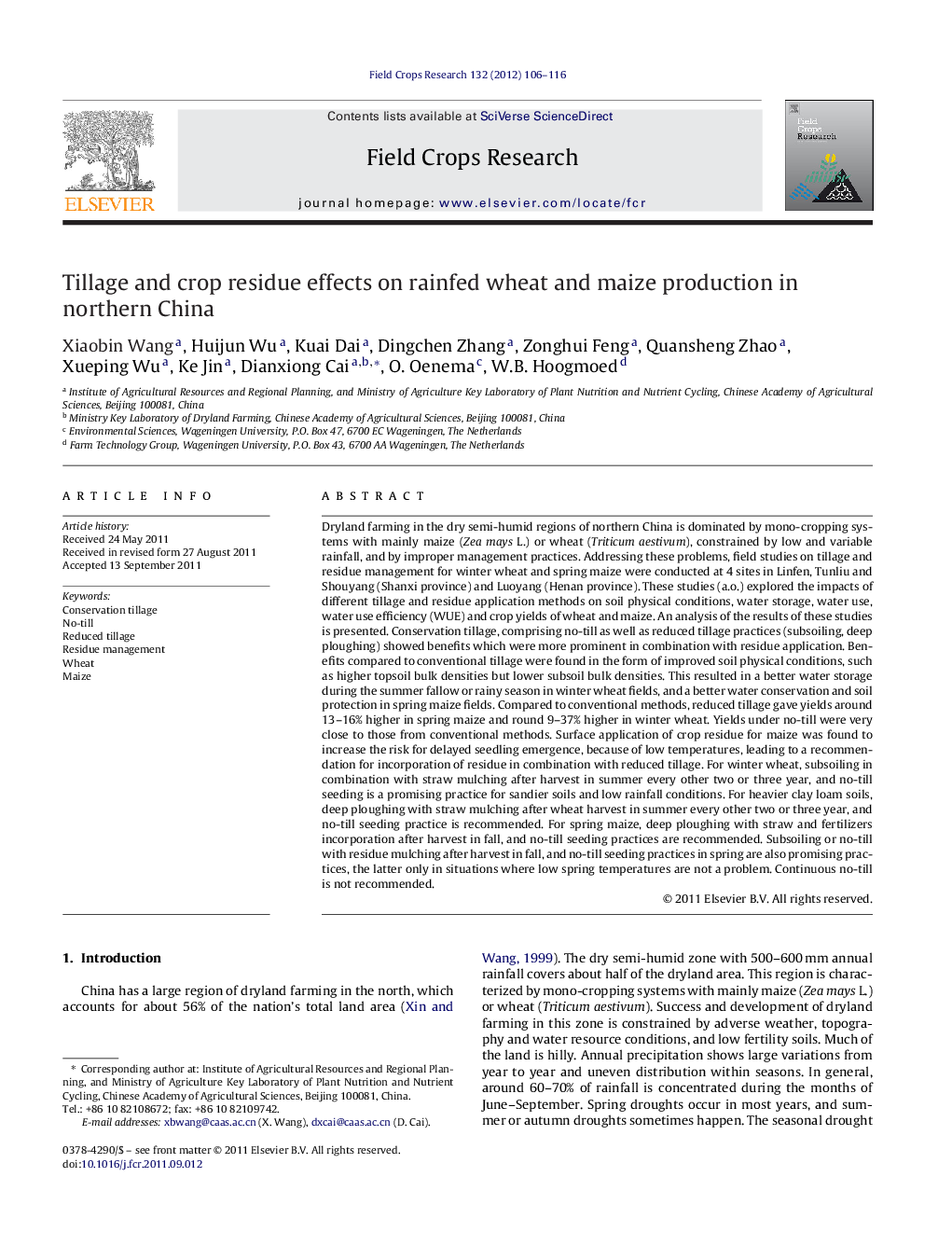| Article ID | Journal | Published Year | Pages | File Type |
|---|---|---|---|---|
| 4510419 | Field Crops Research | 2012 | 11 Pages |
Dryland farming in the dry semi-humid regions of northern China is dominated by mono-cropping systems with mainly maize (Zea mays L.) or wheat (Triticum aestivum), constrained by low and variable rainfall, and by improper management practices. Addressing these problems, field studies on tillage and residue management for winter wheat and spring maize were conducted at 4 sites in Linfen, Tunliu and Shouyang (Shanxi province) and Luoyang (Henan province). These studies (a.o.) explored the impacts of different tillage and residue application methods on soil physical conditions, water storage, water use, water use efficiency (WUE) and crop yields of wheat and maize. An analysis of the results of these studies is presented. Conservation tillage, comprising no-till as well as reduced tillage practices (subsoiling, deep ploughing) showed benefits which were more prominent in combination with residue application. Benefits compared to conventional tillage were found in the form of improved soil physical conditions, such as higher topsoil bulk densities but lower subsoil bulk densities. This resulted in a better water storage during the summer fallow or rainy season in winter wheat fields, and a better water conservation and soil protection in spring maize fields. Compared to conventional methods, reduced tillage gave yields around 13–16% higher in spring maize and round 9–37% higher in winter wheat. Yields under no-till were very close to those from conventional methods. Surface application of crop residue for maize was found to increase the risk for delayed seedling emergence, because of low temperatures, leading to a recommendation for incorporation of residue in combination with reduced tillage. For winter wheat, subsoiling in combination with straw mulching after harvest in summer every other two or three year, and no-till seeding is a promising practice for sandier soils and low rainfall conditions. For heavier clay loam soils, deep ploughing with straw mulching after wheat harvest in summer every other two or three year, and no-till seeding practice is recommended. For spring maize, deep ploughing with straw and fertilizers incorporation after harvest in fall, and no-till seeding practices are recommended. Subsoiling or no-till with residue mulching after harvest in fall, and no-till seeding practices in spring are also promising practices, the latter only in situations where low spring temperatures are not a problem. Continuous no-till is not recommended.
► We examine data from long-term research on conservation agriculture in the drylands of north China. ► No-tillage and reduced tillage gave higher maize and wheat yields due to better soil water storage. ► Use of crop residue showed considerable additional benefits but incorporation needed because of low temperatures. ► Tillage is not necessary every season, but continuous no-tillage is not recommended.
